When cooking meat, the chine bone can be a real obstacle. Found in the center of a cut of meat. The chine bone can be challenging to navigate and often creates an unappetizing presentation once the meat is cook. However, cutting off the chine bone and creating a beautifully prepared dish is possible with a few tricks and techniques.
Here We will explore some of the most effective ideas for cutting off the chine bone in various cuts of meat, including beef, pork, and lamb. We will also discuss the importance of proper knife skills and provide tips for selecting the right knife for the job.
Whether you are a seasoned professional chef or a home cook looking to improve your meat preparation skills. This guide will give you the knowledge and confidence to tackle the chine bone easily.
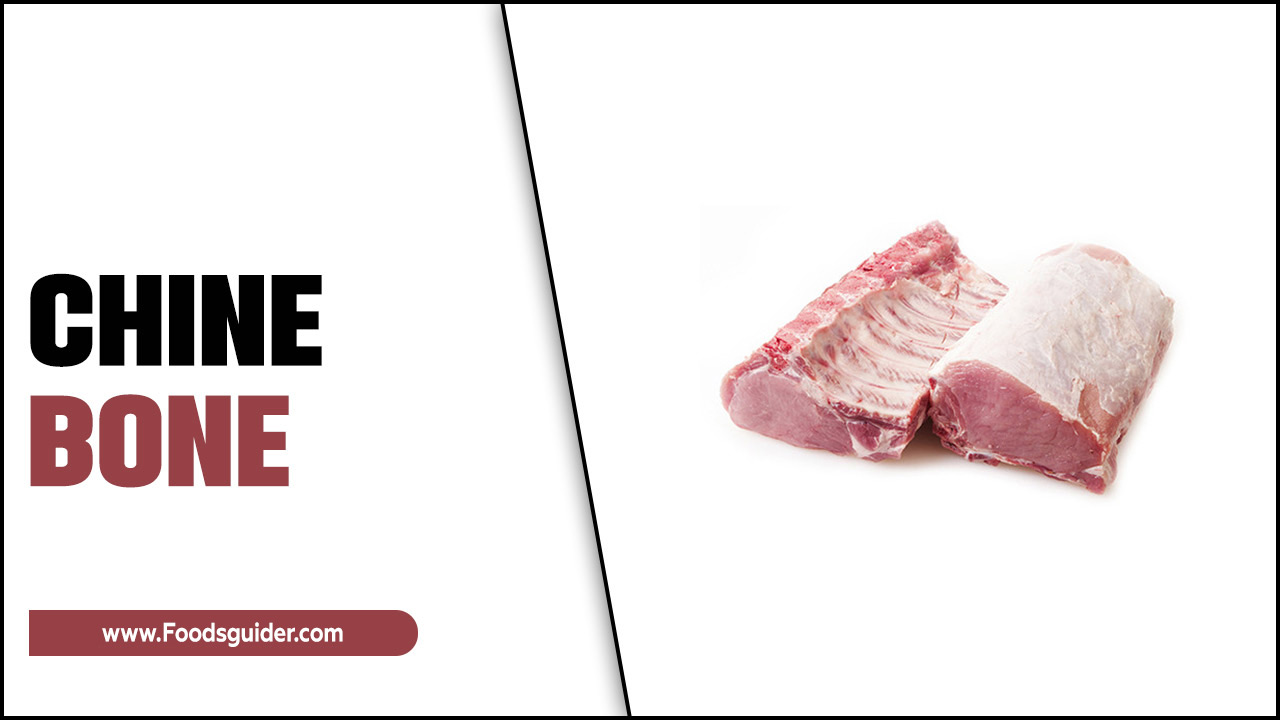
How To Cut Off The Chine Bones From The Bottom Of The Roast
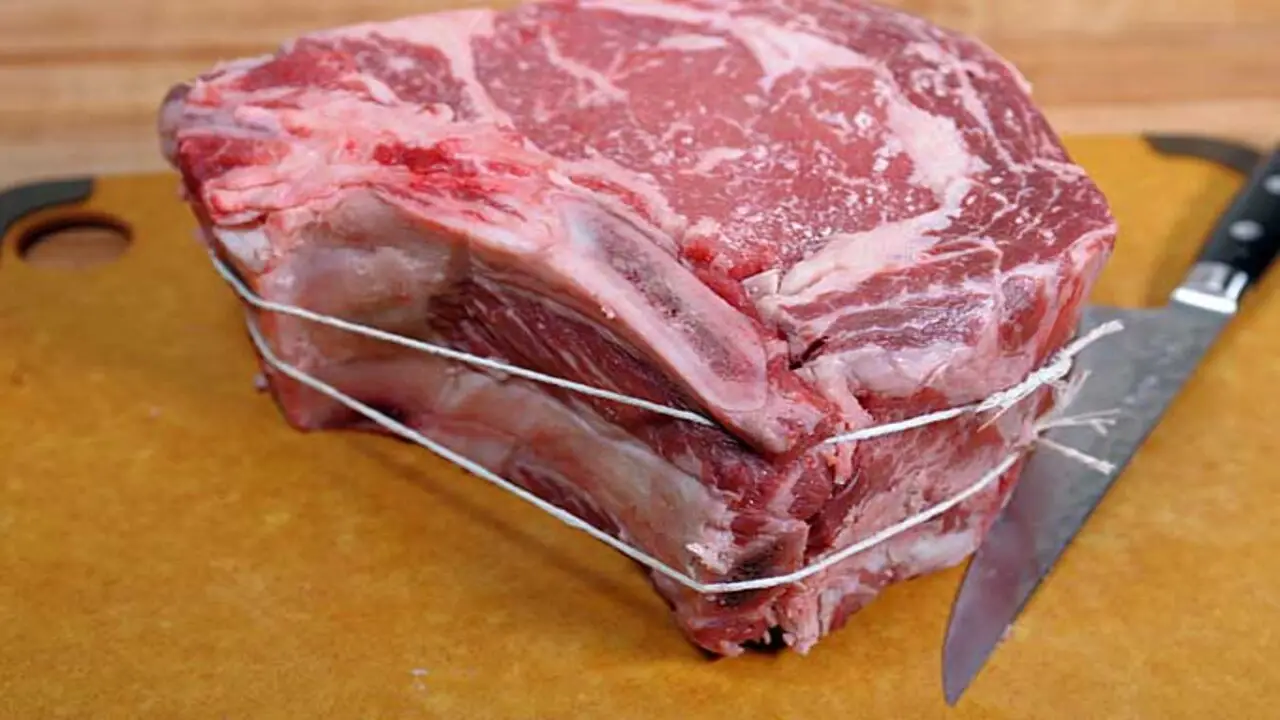
The term “chine bone” usually refers to a specific bone found in certain animals, such as a side of beef or pork. It is more commonly popular as the “spinal bone” or “backbone.” The chine bone runs along the vertebral column, providing structural support and protecting the spinal cord.
In culinary terms, a chine bone-in cut of meat is prized for its tenderness and flavor. It is often used in roasts and can be French-trimmed for an appealing presentation. Properly cooked, chine bone-in cuts yield succulent and juicy meat, making them popular for special occasions and hearty meals.
1.Position The Roast:
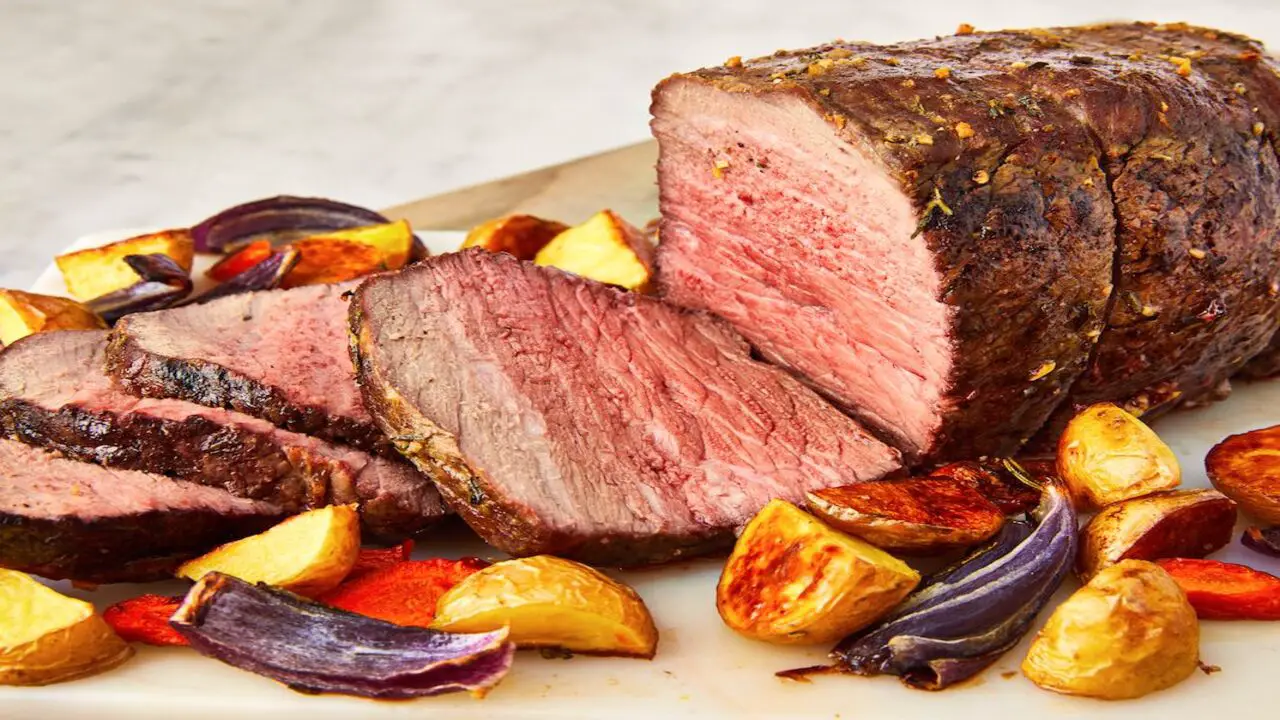
Before cooking, ask your butcher to “chine” the meat, removing the backbone and creating a French-style rack with exposed bones. Place the roast on a cutting board with the bones facing upwards. The bones should form a natural curve if it’s a prime rib.
Using kitchen twine or butcher’s string, carefully tie the roast between each bone, securing the meat in a round shape. This process helps maintain the presentation and even cooking. Cover the bones’ exposed ends with foil to prevent charring during roasting. Cook the roast as per your preferred recipe, and when ready, remove the string before serving.
2.Locate The Chine Bones:
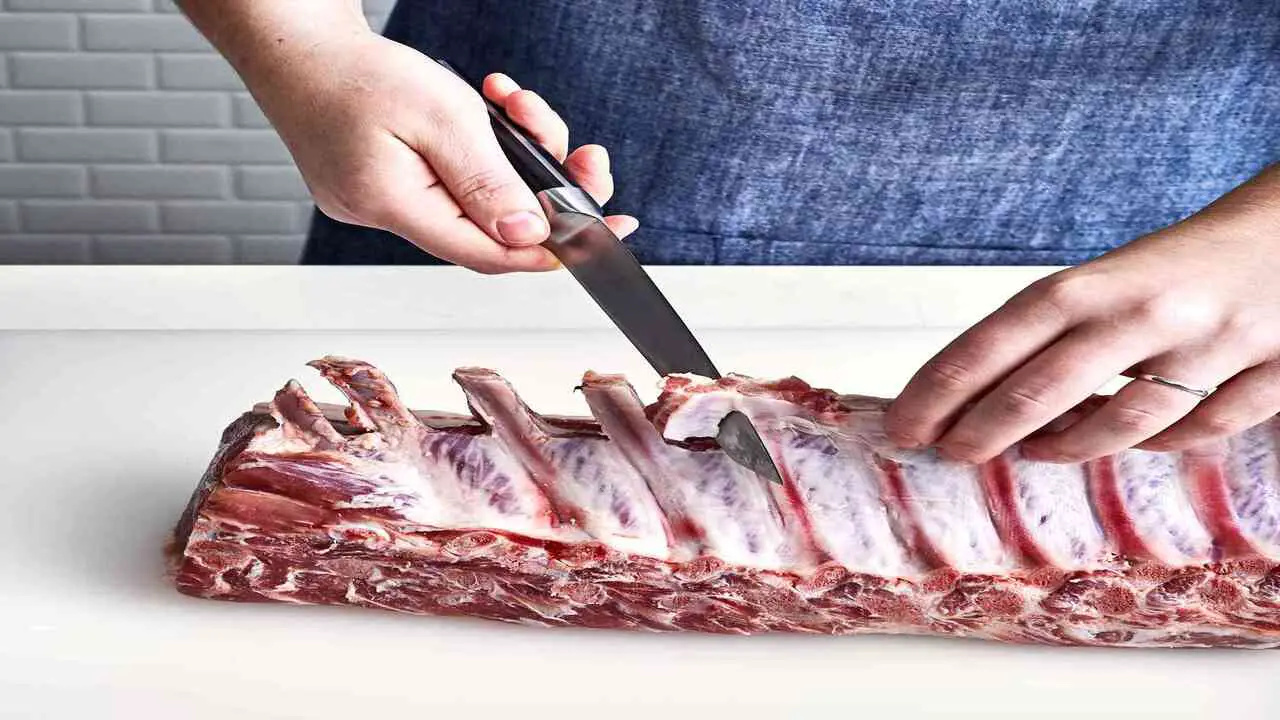
The chine bone is a significant anatomical feature found in certain animals, most notably in large mammals like cattle and sheep. It is a long, prominent bone that runs along the back of the animal and is a crucial part of the vertebral column. In culinary terms, locating the chine bone is essential for various cooking techniques, such as butchering and carving meat.
To locate the chine bone in a piece of meat, one should look for a distinctive ridge or protrusion along the center of the meat’s back. This ridge corresponds to the chine bone’s presence and serves as a helpful guide for precise cuts. When preparing roasts or primal cuts, understanding the position of the chine bone ensures that the meat can be easily separated into desirable portions.
Professional butchers and skilled cooks often employ their knowledge of the chine bone to achieve well-prepared and visually appealing dishes, making it a crucial aspect of the culinary process.
3.Make An Incision:
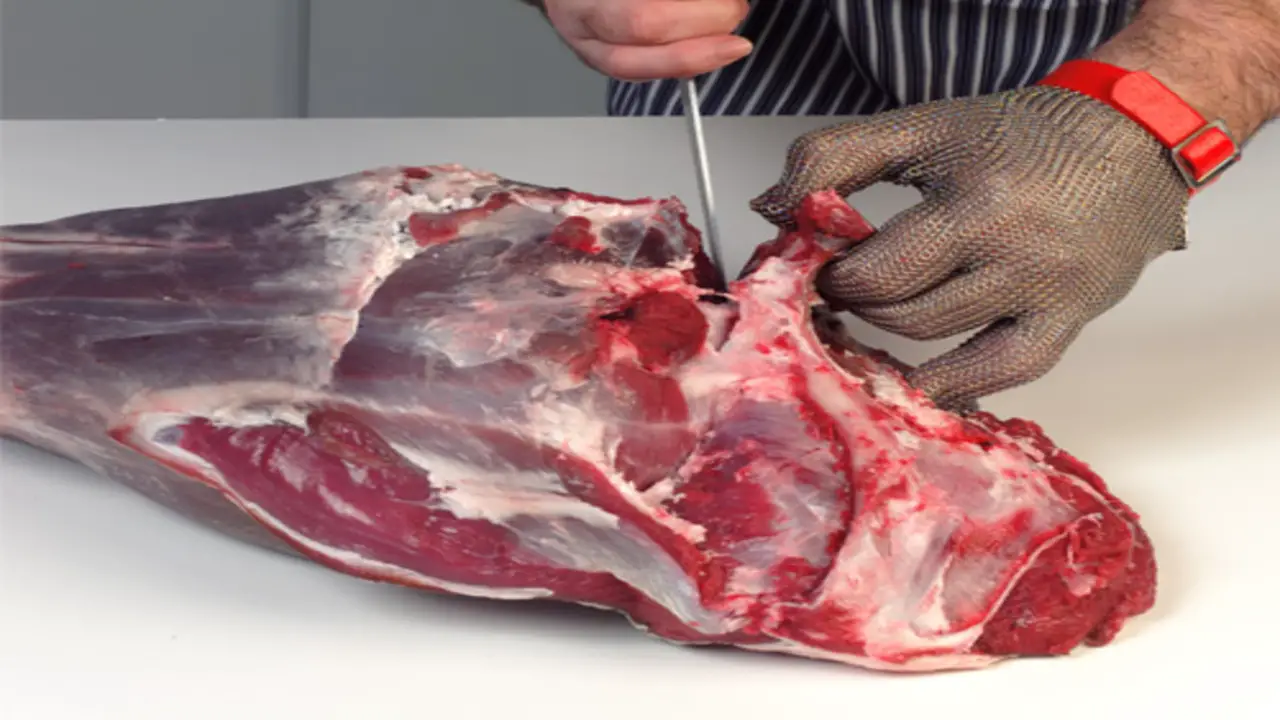
Making an incision in the chin bone, also popular as a genioplasty, is a surgical procedure performed to reshape or reposition the chin for various reasons. An oral and maxillofacial or plastic surgeon typically carries out this procedure.
The patient is usually under anesthesia during the surgery to ensure comfort and safety. Depending on the chosen technique, the surgeon makes an incision either inside the mouth or externally under the chin. Through this incision, the surgeon gains access to the chin bone, allowing them to either remove a portion of the bone or reposition it to achieve the desired aesthetic or functional outcome.
After the procedure, the incision is carefully sutured, and the patient is given post-operative instructions to facilitate proper healing. Genioplasty can enhance facial balance, correct congenital deformities, or address issues related to the bite. As with any surgery, potential risks and benefits are considered, and patients are encouraged to discuss their expectations thoroughly with the surgeon before proceeding with the operation.
4.Loosen The Bones:
“Loosen the Bones” is a popular Chinese cooking technique that involves removing the chine bone from a whole fish. The chine bone is the central backbone that runs along the fish’s upper body, which can be tough and difficult to eat. The fish becomes easier to serve and enjoy by loosening and removing this bone.
To “Loosen the Bones,” a skilled chef typically makes precise cuts along the bone, gently separating it from the flesh without breaking the delicate structure. This process requires precision and expertise to ensure the fish remains intact and visually appealing.
The result is a beautifully presented fish dish with smooth, boneless flesh that can easily lift off the plate. This technique enhances the dining experience and allows for the seamless integration of flavors and sauces. Making it a popular choice in Chinese cuisine.
5.Lift And Cut:
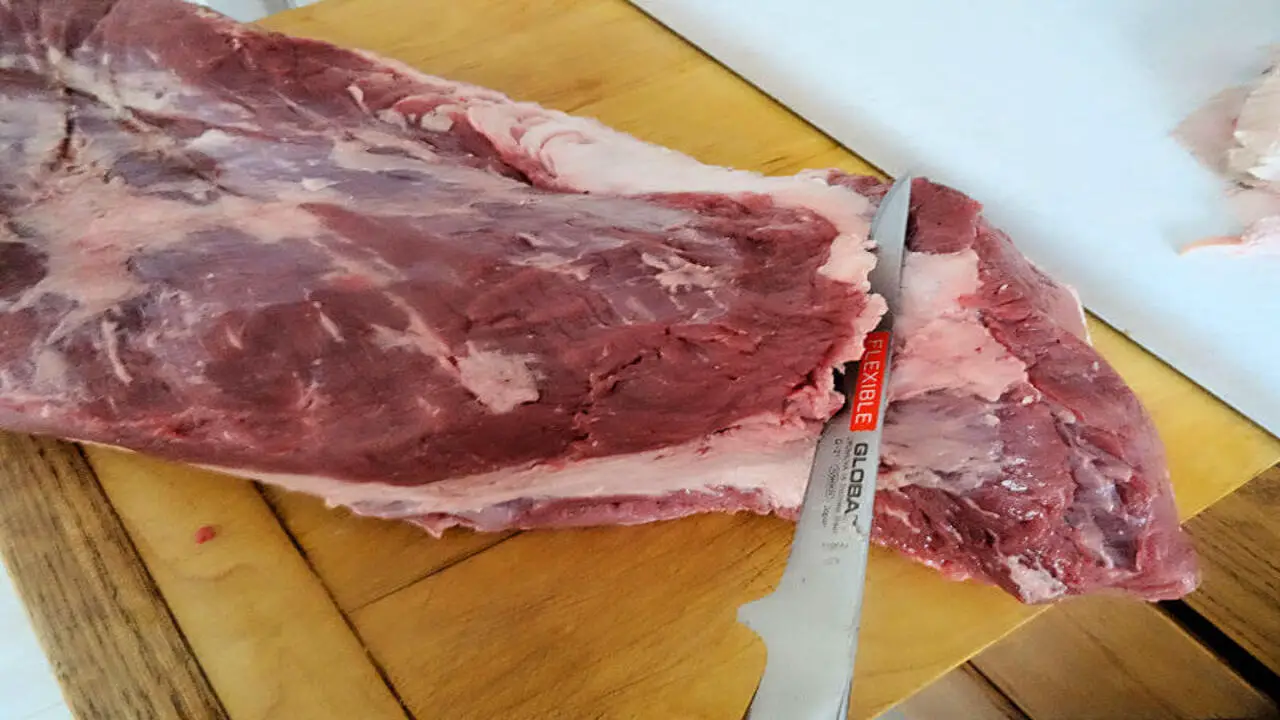
Lifting and cutting chine bone is handy in butchery and culinary arts to prepare certain cuts of meat, particularly pork, and lamb. The chine bone is a prominent ridge of bone located along the spine of the animal. When using the lift-and-cut method. The butcher or chef carefully separates the chine bone from the meat by an incision along its length and then lifting it away.
Removing the chine bone makes the meat more flexible, allowing for easier carving and presentation. This technique is often employed to create specific cuts, such as a crown roast, where the ribs are exposed in a circular shape.
The lift and cut chine bone method requires skill and precision to ensure the meat remains intact and beautifully presented. It is a favored approach among professionals to create visually appealing dishes that taste exceptional and showcase the culinary craft’s artistry.
6.Remove The Bones:
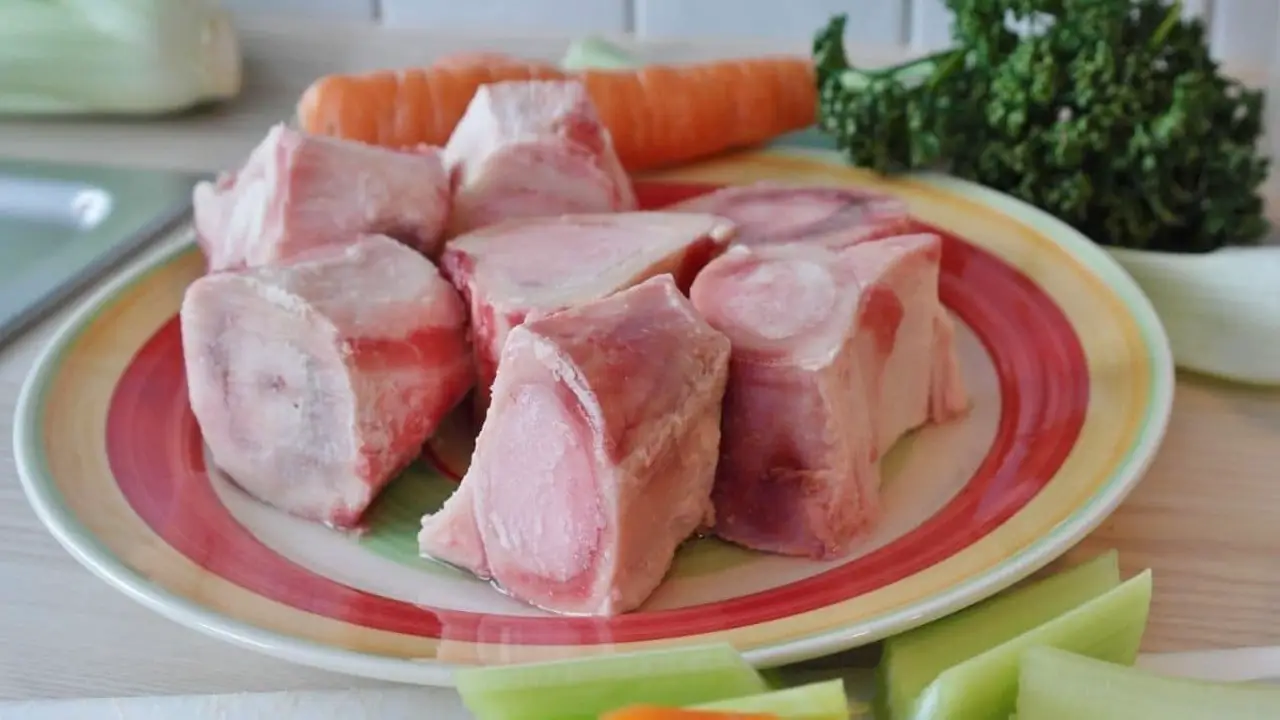
To remove the bones from a chicken, commonly called “deboning,” one needs to follow a specific process. Start by placing the chicken breast side down on a clean cutting board. Use a sharp knife to make an incision along the backbone from the neck to the tail. Next, carefully cut along the ribcage on both sides, keeping the knife close to the bones to avoid wasting meat.
Once the ribcage is detached, gently separate the meat from the breastbone, preserving the shape of the chicken. To remove the wing and leg bones, locate the joints and cut through them. Lastly, ensure no small bones remain in the meat by running your fingers through it. Deboning a chicken requires practice and precision, but the boneless result is ideal for various dishes, such as stuffed chicken rolls or chicken roulades.
7.Optional:
The term “optional chine bone” appears to be a misinterpretation or a typographical error. However, based on the context, it is possible that you are referring to the “occipital bone,” which is a vital part of the human skull. The occipital bone forms the rear base of the skull, protecting the cerebellum and the brainstem. It also features an opening called the foramen magnum, through which the spinal cord connects to the brain.
The occipital bone’s structure provides essential support and protection for the delicate neurological structures in the skull. Moreover, it plays a crucial role in the articulation between the skull and the spine, facilitating movements like nodding and tilting of the head.
The occipital bone is not optional but an integral and crucial component of the human skull. Serving multiple vital functions to ensure proper neurological function and stability.
Alternative Methods For Removing Chine Bones
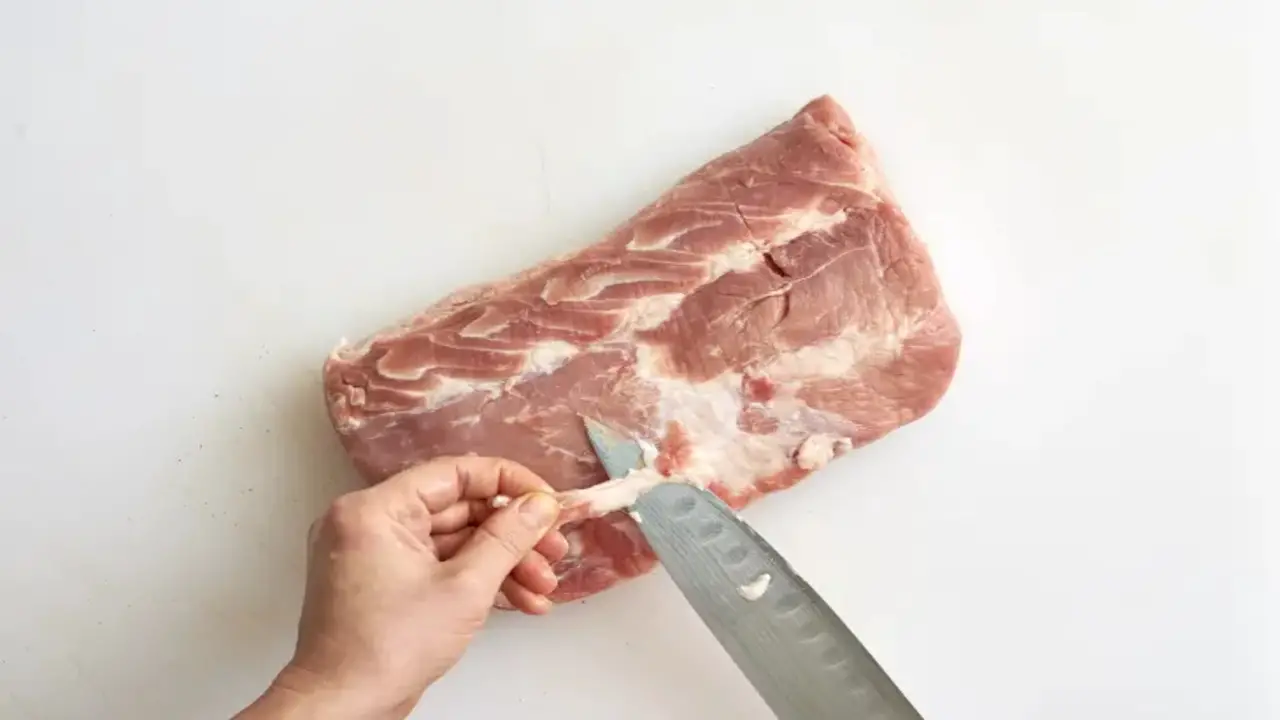
Chine bones are often present in beef, lamb, and pork cuts, making it challenging to carve the meat properly. Traditional methods of removing chine bones involve using a sharp knife and cutting around the bone. Which can be time-consuming and result in wasted meat.
However, there are alternative methods for removing chine bones that are becoming increasingly popular. One such method is using a bone saw, a specialized tool that can cut through bone quickly and easily. Another option is to use a meat cleaver to chop through the bone and separate the meat.
Alternatively, some chefs prefer to remove the chine bone before cooking the meat by separating it from the spine using a boning knife. This method requires some skill and precision but can result in a more even cook and visually appealing presentation. Other techniques include using a meat grinder or a pressure cooker to cook the meat until the bones become soft and easily removed.
Conclusion
So there you have it, folks! These are just a few creative ideas to crack the code and cut off the elusive chine bone. Whether you prefer the hammer and chisel method or the trusty scissors technique, removing this pesky bone will make your cooking experience much smoother.
With these tips and tricks, you’ll be able to impress your friends and family with perfectly trimmed meat dishes in no time. Say goodbye to the frustration of hacking away at your meat and say hello to a new world of culinary possibilities.
FAQ
1.What Is “Cracking The Code: Ideas To Cut Off The Chin Bone”?
Ans: Cracking the Code: Ideas to Cut off the Chin Bone” is not a recognized medical or legitimate procedure. Attempting to cut off the chin bone or any other bone is extremely dangerous and can lead to severe injuries and health risks.
2.Is It Safe To Cut Off The Chin Bone?
Ans: No, cutting off the chin bone or any other bone in the body is unsafe. Bones are essential for the body’s structure, support, and protection. Attempting to remove a bone without proper medical training and equipment can result in severe damage to nerves, blood vessels, and organs, leading to life-threatening complications.
3.Why Would Someone Want To Cut Off Their Chin Bone?
Ans: No valid medical reason for anyone to want to cut off their chin bone. Removing it would cause irreversible damage and negatively impact a person’s appearance and functionality.
4.How Can I Find A Reputable Plastic Surgeon For Chin Enhancement Procedures?
Ans: To find a reputable plastic surgeon, do thorough research, read reviews, check their credentials, and schedule a consultation to discuss your goals and concerns. Choose a board-certified plastic surgeon with experience in facial procedures.
5.What Are Some Natural Ways To Improve The Appearance Of My Chin?
Ans: While there are no natural methods to alter the bone structure. You can enhance your chin’s appearance through exercises that target the surrounding muscles, such as jawline exercises. Maintaining a healthy lifestyle, proper skin care, and good posture can also contribute to a more defined facial profile.
